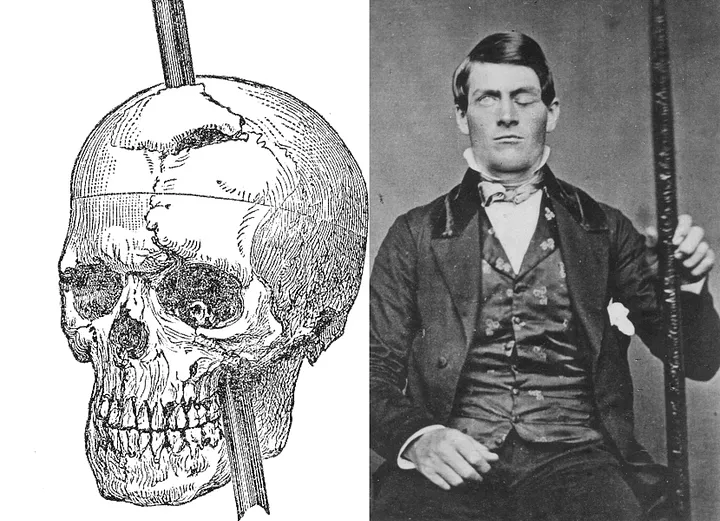What would happen if a metal rod shot through your brain — and you survived? That’s not science fiction. It actually happened to Phineas Gage, a 19th-century railroad worker whose bizarre accident turned him into one of the most famous medical mysteries in history.
The story of Phineas Gage’s brain injury is not just weird — it’s a foundational case in neuroscience and psychology, revealing how the brain affects personality and behavior.
The Day It Happened
On September 13, 1848, Gage was working on a railroad construction site in Vermont. His job was to pack gunpowder into rock using a tamping iron — a 3.5-foot-long metal rod.
A spark ignited the powder, and the rod launched upward like a missile, piercing Gage’s left cheek, passing through his brain, and exiting the top of his skull.
He didn’t just survive. He stood up, spoke clearly, and walked to the doctor’s office.
🔗 Internal link: The Town That Vanished Overnight: Centralia’s Eternal Fire
What Changed After the Injury?
Physically, Gage recovered surprisingly well. But mentally and emotionally, he was no longer the same man.
- Before: Responsible, hardworking, respectful
- After: Impulsive, rude, erratic, and socially inappropriate
His friends said he was “no longer Gage.” The once-reliable foreman was now unemployable.
This dramatic personality change became one of the first pieces of evidence that different parts of the brain control different behaviors.
Why Is This Case So Important?
Phineas Gage’s accident provided the earliest proof that the frontal lobes regulate personality, decision-making, and emotional control.
His case is still taught in:
- Psychology classes
- Medical schools
- Neuroscience research papers
It marked the beginning of modern brain science — all because of a freak accident with a metal rod.
📘 External link: Harvard Medical School – The Curious Case of Phineas Gage
The Skull That Changed Science
Today, Gage’s skull and tamping iron are preserved at Harvard’s Warren Anatomical Museum. They remain silent but powerful symbols of how a single accident helped scientists understand the structure-function relationship in the brain.
🔗 Internal link: The Dancing Plague of 1518: Why Did Hundreds Dance to Death?
Final Thoughts
Phineas Gage may not have intended to become a medical legend, but his case continues to fascinate scientists and the public alike. His story shows that even the weirdest historical accidents can unlock profound truths about the human mind.




